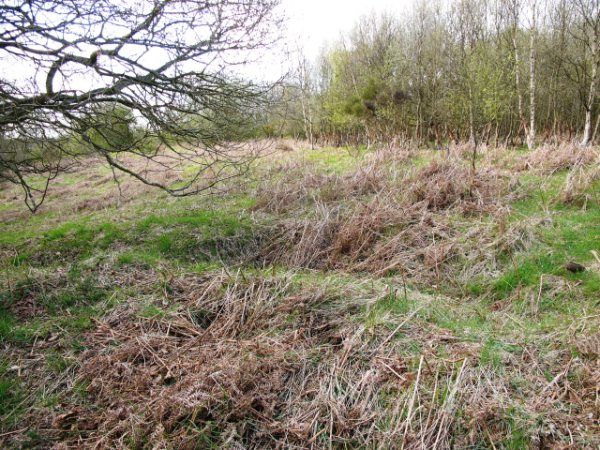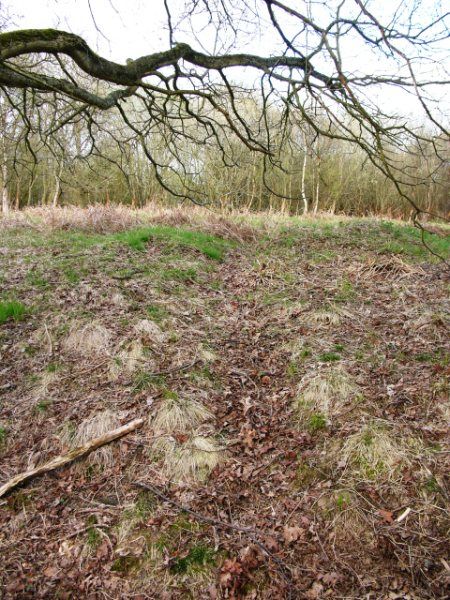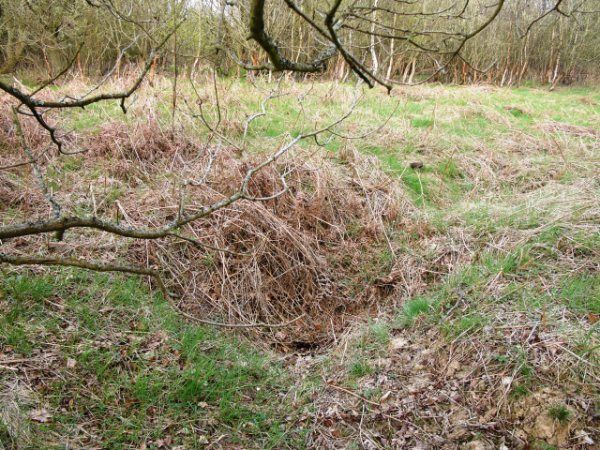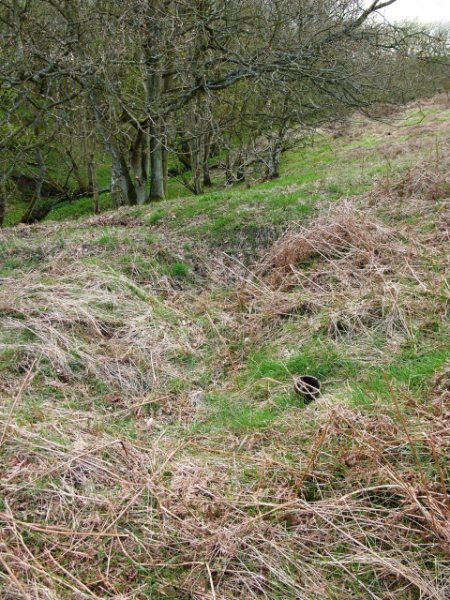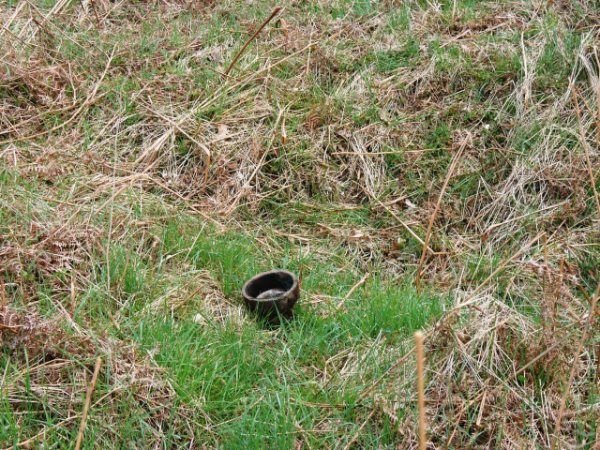The Acklington Patrol was also known as the Chevington Drift Patrol. Based near RAF Acklington now HMP Northumberland.
| Name | Occupation | Posted from | Until |
|---|---|---|---|
| Sergeant Leonard Crackett | Mining |
Unknown | Unknown |
| Sergeant Henry Moscrop | Mining pit deputy |
Unknown | 03 Dec 1944 |
| Corporal John Thomas Dalby | Mining - colliery fitter |
Unknown | 03 Dec 1944 |
| Private James Jobson | Mining - colliery fitter |
Unknown | 03 Dec 1944 |
| Private Richard Scott | Colliery hewer |
Unknown | 03 Dec 1944 |
| Private Thomas George Simpson | Mining - hewer |
Unknown | 03 Dec 1944 |
| Private Albert Edward Smith | Colliery hewer |
Unknown | 03 Dec 1944 |
The Acklington OB was built by the 184th (S) Tunnelling Company Royal Engineers.
After taking sometime to find the OB it proved to be only a hole in the ground as the whole site has collapsed. The main area of the "Elephant" shelter is now a hollow in the ground. The bolt hole leading from the OB towards the nearby stream is visible from above but this has also collapsed. It looks like it was built out of cut down wooden railway sleepers, a common technique for the bolt holes. These have also rotted and now form a mulch trench.
The site is on high ground not far from a stream within Chevington Woods. Most of Northumberland's OB's follow this pattern. It meant there was a water supply nearby in case of having to lie low for longer periods of time. The OB is not far from former RAF Acklington (this is now a prison). The only other piece of the OB left is the top of one of the ventilation pipes; these are formed from clay type field drain pipes. During WW2 the area around the OB was wooded and the trap door entrance was hidden behind a tree that you had to squeeze through to gain access. The entrance was in a bank covered in moss.
Acklington Patrol
Key targets will have included RAF Acklington (now a prison) and RAF Eshott. The main A1 road bridge in Felton was an obvious target for slowing up any German advance
There were also key railway targets including the East Coast main railway line with its viaduct at Morwick and the Amble branch line, which was a big supplier of coal at the time.
Nearby the Royal Navy base at Amble could have been taken by the invading army, as were a number of large country estate type houses nearby that the Germans would be expected to use as HQs and camps after landing on the east coast.
Druridge Bay was thought to be a possible German landing ground and therefore an area that the Patrol would have looked at as a possible target if the invasion had come.
Patrol training was done locally in Chevington Woods; the members spent a lot of time there as it is out of the way and not over looked. They went to Cupar in Fife, Scotland and did the Commando training course. They were also trained by the Regular Army at Otterburn Ranges with the Sergeant also attending courses at Coleshill House.
The Patrol were issued Smith & Wesson pistols. Len Crackett had the Patrol's .22 rifle and telescopic sights in his wardrobe with No.76 grenades and a knuckle duster!
It is assumed the Patrol was issued with the standard Auxiliary Unit kit.
The Patrol guarded the Royal Family at Balmoral, they also went to the Isle of Wight as part of the garrison in the lead up to D-Day.
Jack Dalby was Henner's Best Man when he married. Ex Intelligence Officer, Captain Anthony Quayle sent a telegram congratulating the couple.
Len Crackett was the first Sergeant in the Patrol although Henner Moscrop also later served as the Patrol Sergeant. Len may have left, or was unable to commit the time to be in the Patrol, we may never know. The Patrol called themselves “The Secret Seven” so someone left or was replaced, as we know of eight members. All the Patrol members lived within a couple of hundred yards of each other in Chevington Drift.
The National Archives in Kew ref WO199/3388
1939 Register
Hancock data held at B.R.A
Captain Anthony Quayle interview.
Marj Cook, daughter of Henner Moscrop.
Ken Crackett the son of Len.
Derek Sillet the nephew of Jack Dalby.
Morpeth & Ashington Extra Feb 2011
